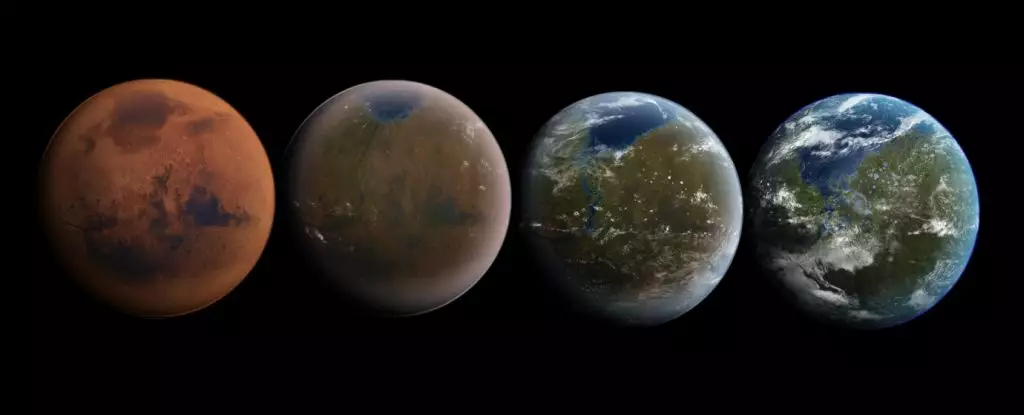Human colonies on Mars have long been a topic of interest for scientists and space enthusiasts alike. However, the harsh conditions on the red planet, particularly its freezing temperatures, pose a significant challenge to the survival of warm-blooded creatures. In order to make Mars habitable for humans, terraforming strategies need to be developed to heat up the planet and create a sustainable environment for future colonization efforts.
Recent research conducted by a team led by electrical engineer Samaneh Ansari of Northwestern University has introduced a groundbreaking strategy for terraforming Mars. By releasing nanoscopic metal rods into the Martian atmosphere, a greenhouse effect can be created and maintained to warm up the planet. This innovative approach is believed to be 5,000 times more efficient than previous strategies proposed for global warming on Mars.
The use of nanoscopic metal rods to trap sunlight and heat the planet offers a promising solution to the challenges of terraforming Mars. By utilizing the metallic minerals readily available in Martian soil, this method eliminates the need to transport greenhouse gases from Earth or mine them from beneath the Martian surface. The nanorods, when released at a sustained rate, can raise the atmospheric temperature, causing ice to melt and increasing atmospheric pressure over time.
While the nanorod strategy presents a significant advancement in the field of terraforming, there are still obstacles that need to be addressed. The long-term effectiveness of the nanorods in Mars’ leaky atmosphere remains uncertain, raising questions about their ability to sustain the greenhouse effect. Additionally, the potential for the nanoparticles to attract water particles and fall back to the surface as rain presents a challenge that requires further study and consideration.
Despite the remaining challenges, the development of nanoscopic metal rods as a terraforming strategy represents a critical step towards achieving a sustainable human presence on Mars. By raising the planet’s temperature and creating a more hospitable environment for microbial life, this innovation paves the way for future exploration and colonization efforts. With continued research and refinement, the dream of establishing long-term human colonies on Mars may soon become a reality.


Leave a Reply